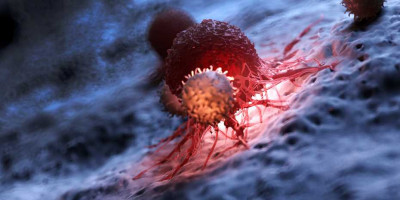
Non-Hodgkin lymphoma (NHL) is a group of cancers that originate in the lymph nodes and affect white blood cells of the immune system called B cells.
In NHL, B cells grow out of control and create tumours in the lymph nodes, spleen, or other tissues.
According to the American Cancer Society, about 80,000 people will be diagnosed with NHL in 2020, and 20,000 will die of it.
Today, immunotherapy is one of the most promising treatment for cancer patients.
Unlike radio- or chemo- therapies, immunotherapy aims to "switch on" the patient's own immune system to attack and eliminate the tumour.
However, tumours, including NHL, often mutate to make themselves invisible to the immune system or even exploit interactions with immune cells to grow.
A team of researchers led by Elisa Oricchio at EPFL have now identified one of the mechanisms used by NHL to hijack the immune system.
The scientists found that certain patients with NHL have a mutated and over-activated form of a protein called cathepsin S.
This protein is responsible for cutting other proteins into small fragments that are then exposed on the surface of tumour cells.
These fragments mediate communications between cancer and immune cells.
"When cathepsin S is active, cancer cells interact with immune cells called CD4 T-cells, which help the tumour to grow, while they maintain social distance with CD8 T-cells, which would attack and kill the tumour," explains Elie Dheilly, one of the lead authors of the study.
The identification of this duplicitous relationship between cancer cells and T-cells prompted the researchers to genetically eliminate cathepsin S to understand how tumour growth would be affected.
Inhibiting cathepsin S reduced tumour growth by inverting the communication with T-cells: CD8 T-cells were now attacking the tumour, while CD4 T-cells were kept at bay.
This happens by inducing something called "antigen diversification", which generates a different population of fragments helping T-cells to identify and kill tumour cells.
"We think that cathepsin S could represent an important therapeutic target," says Elisa Oricchio.
"Inducing antigen diversification is an attractive therapeutic strategy to increase tumour immunogenicity and enhance response to immunotherapies in lymphoma but possibly also in other tumour types."
During the study, Elena Battistello, co-lead author, developed a new imaging technique to specifically measure the activity of cathepsin S.
Using this technique, Oricchio and her team have identified and further developed new inhibitors (patent application filed) that could be used to improve the treatment of patients diagnosed with NHL.
Source: ENAC